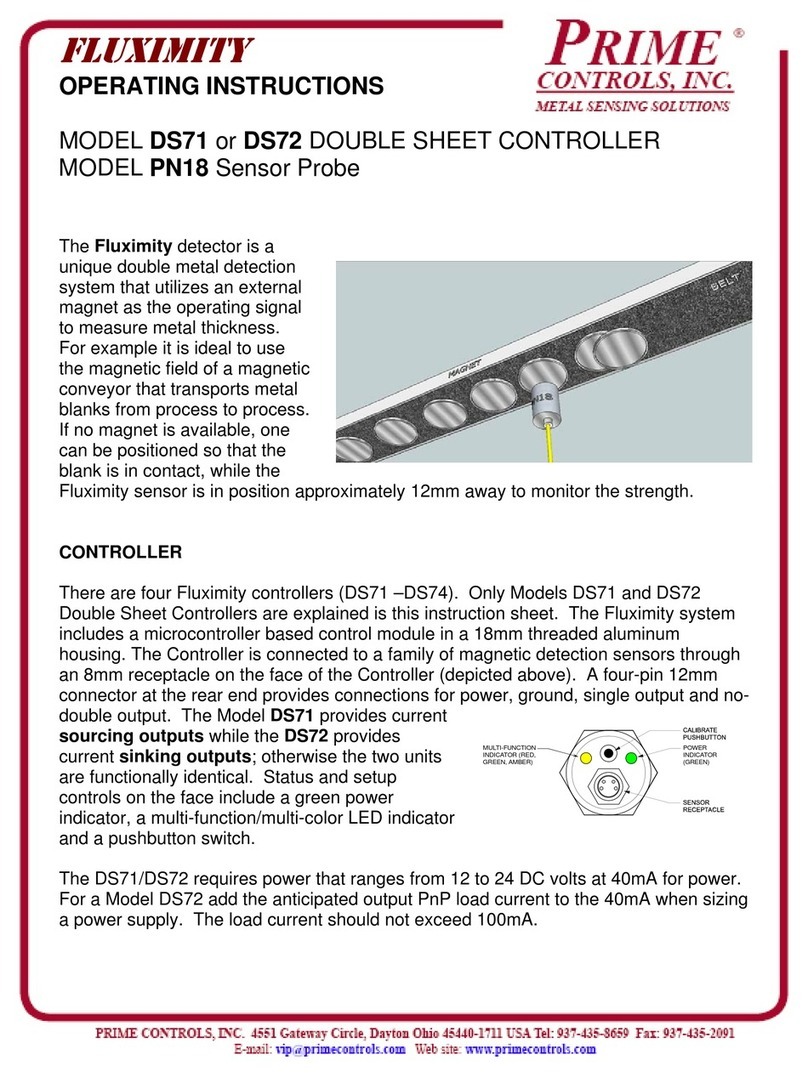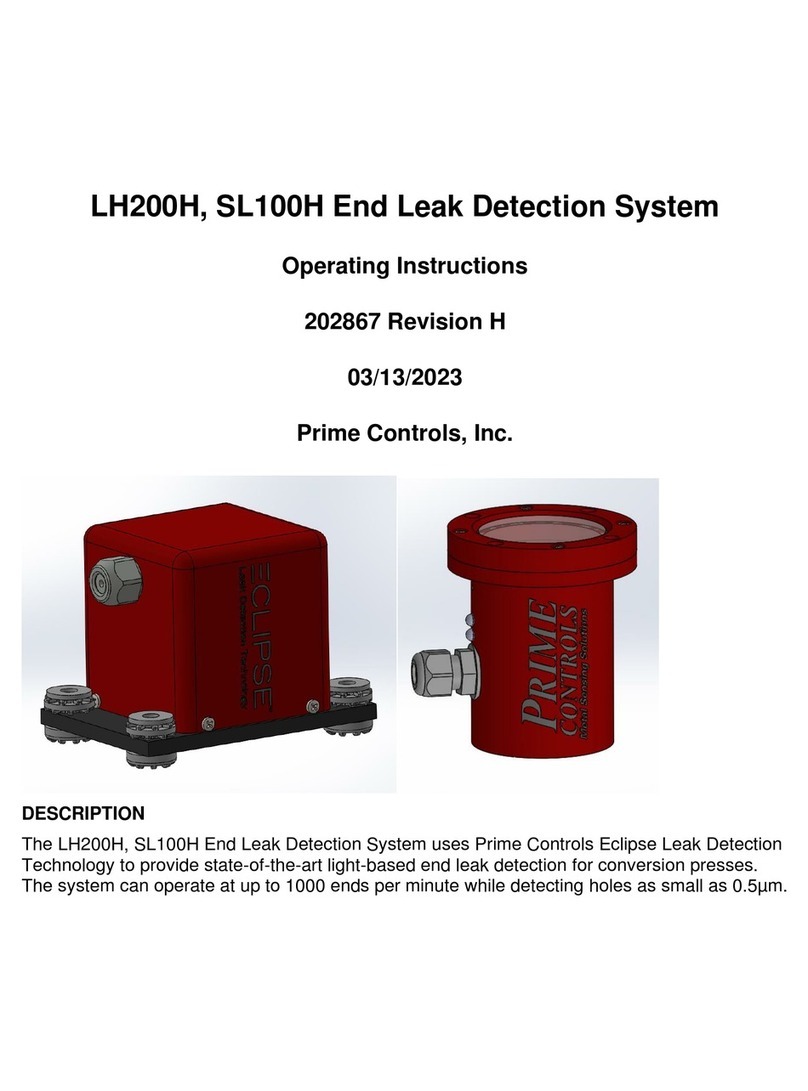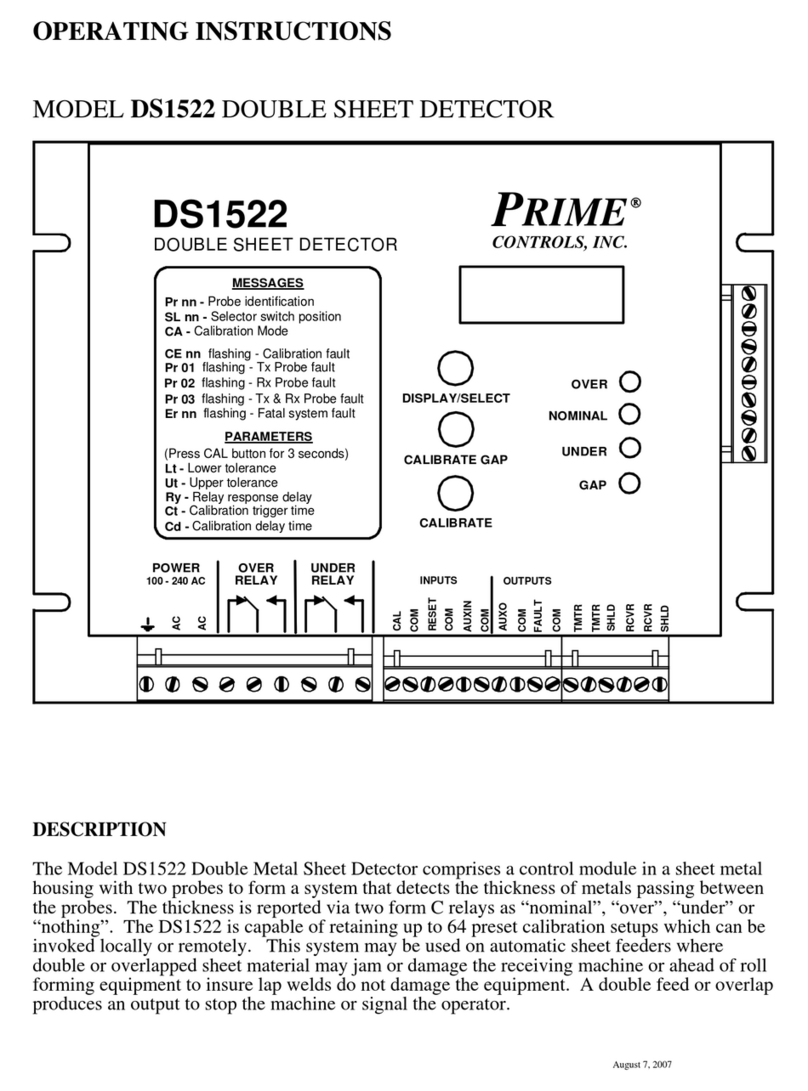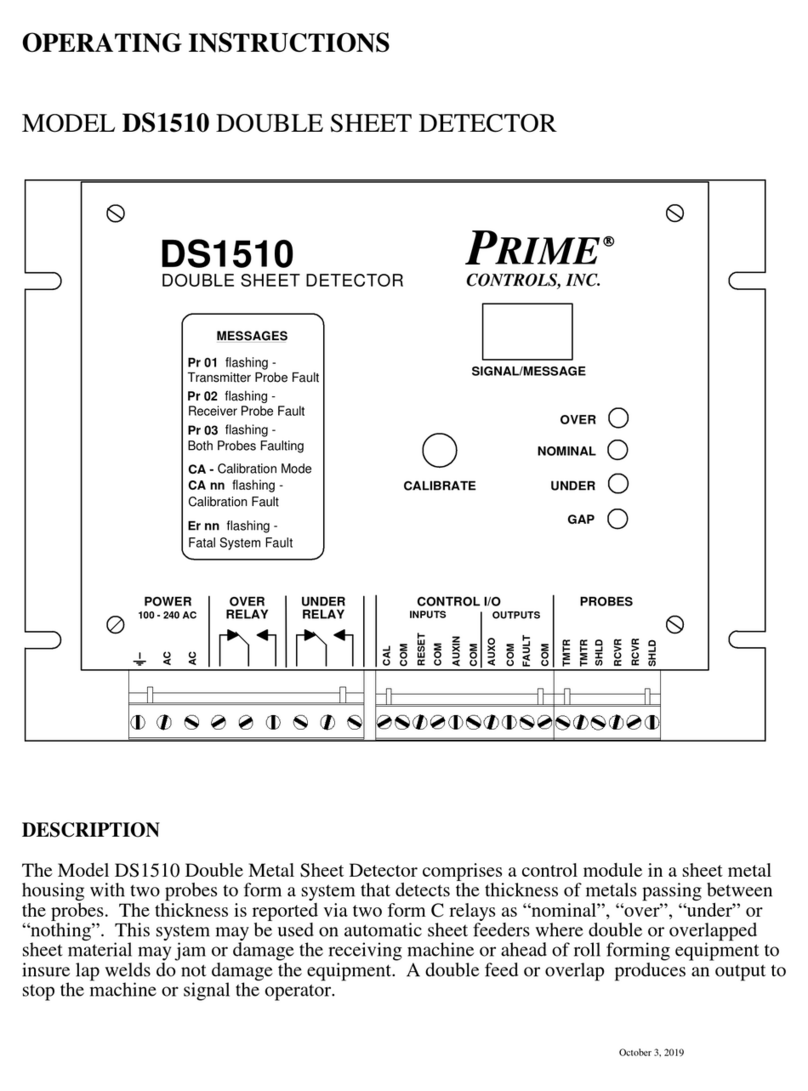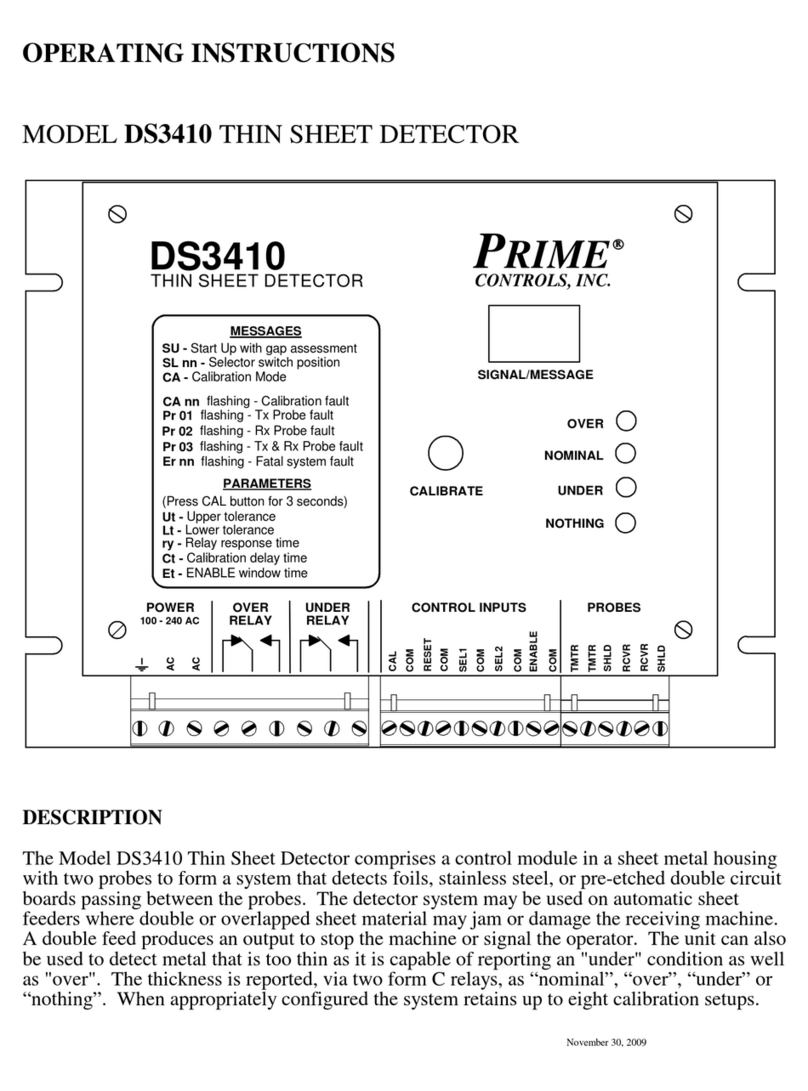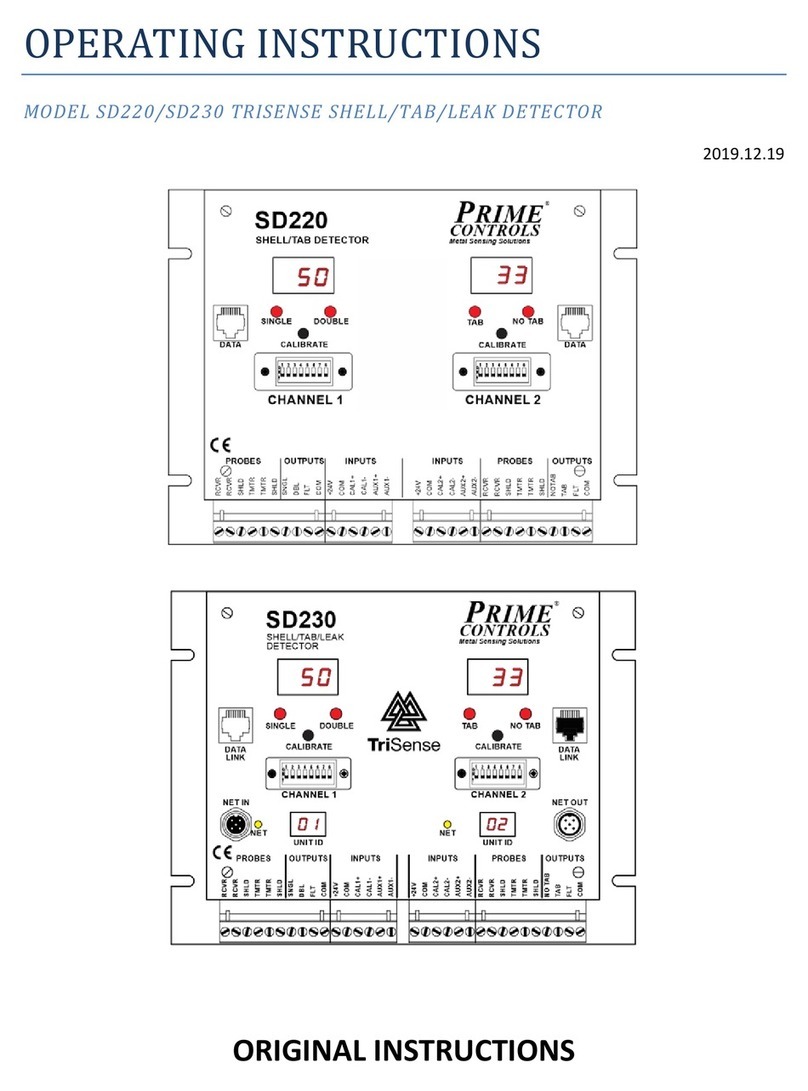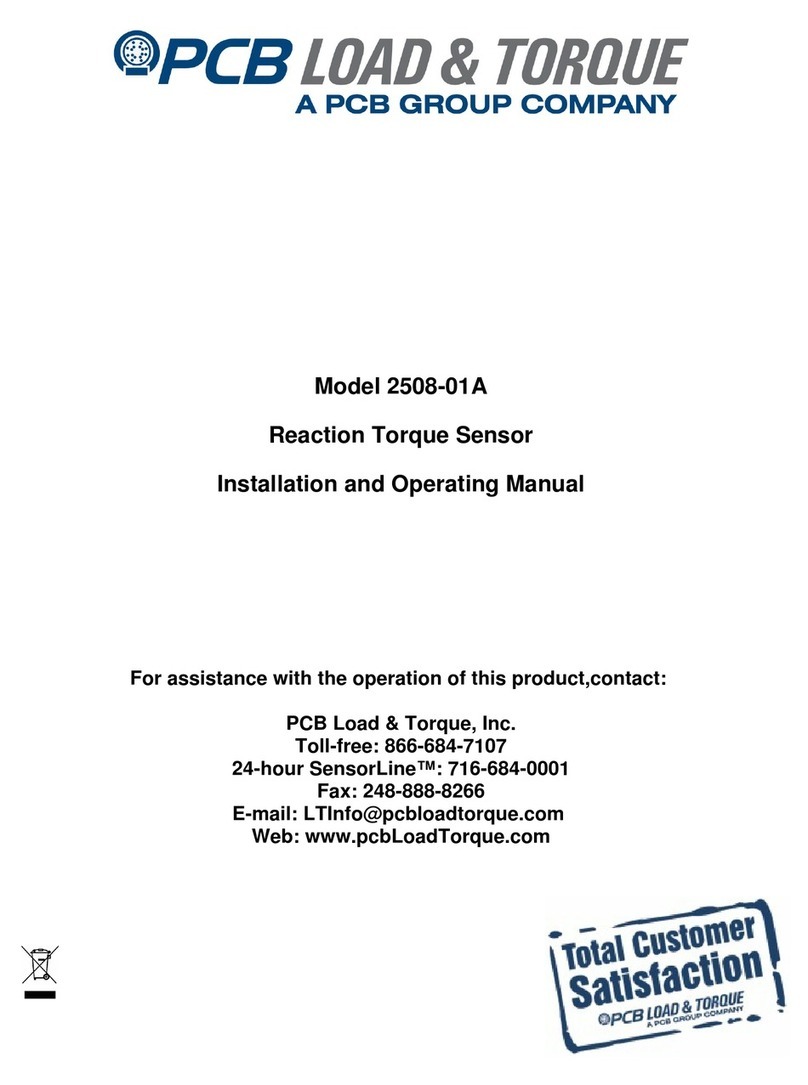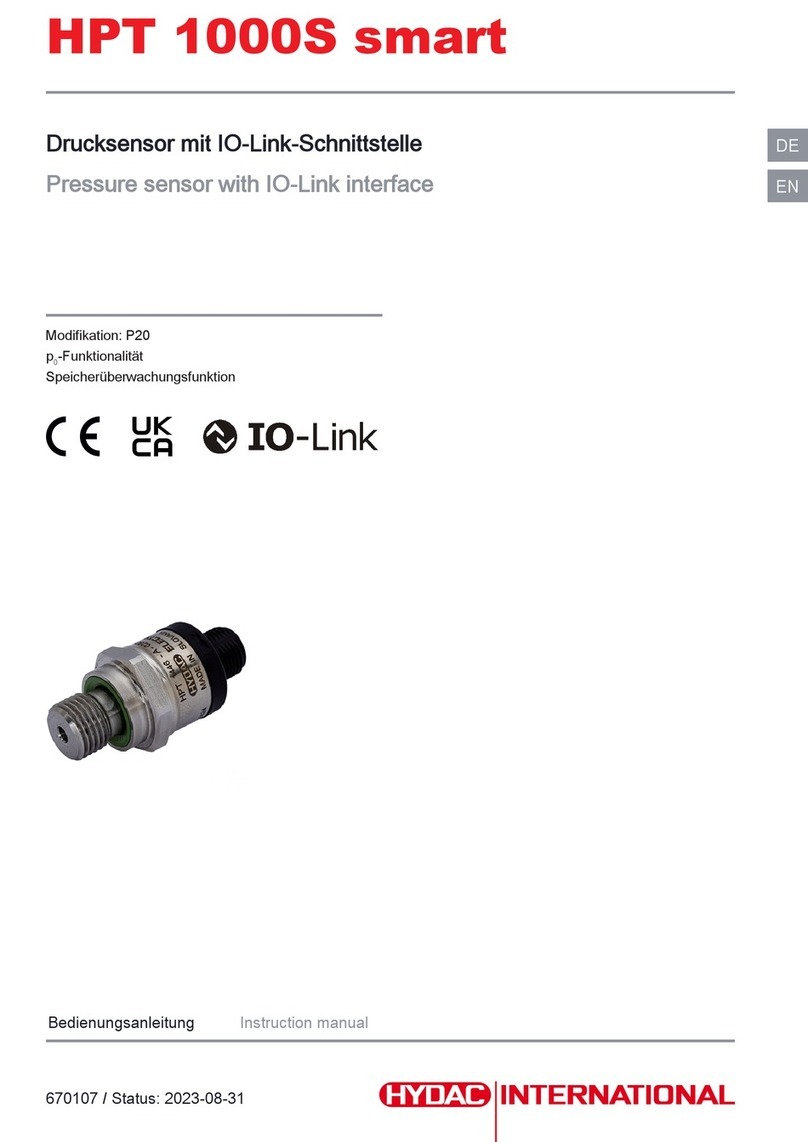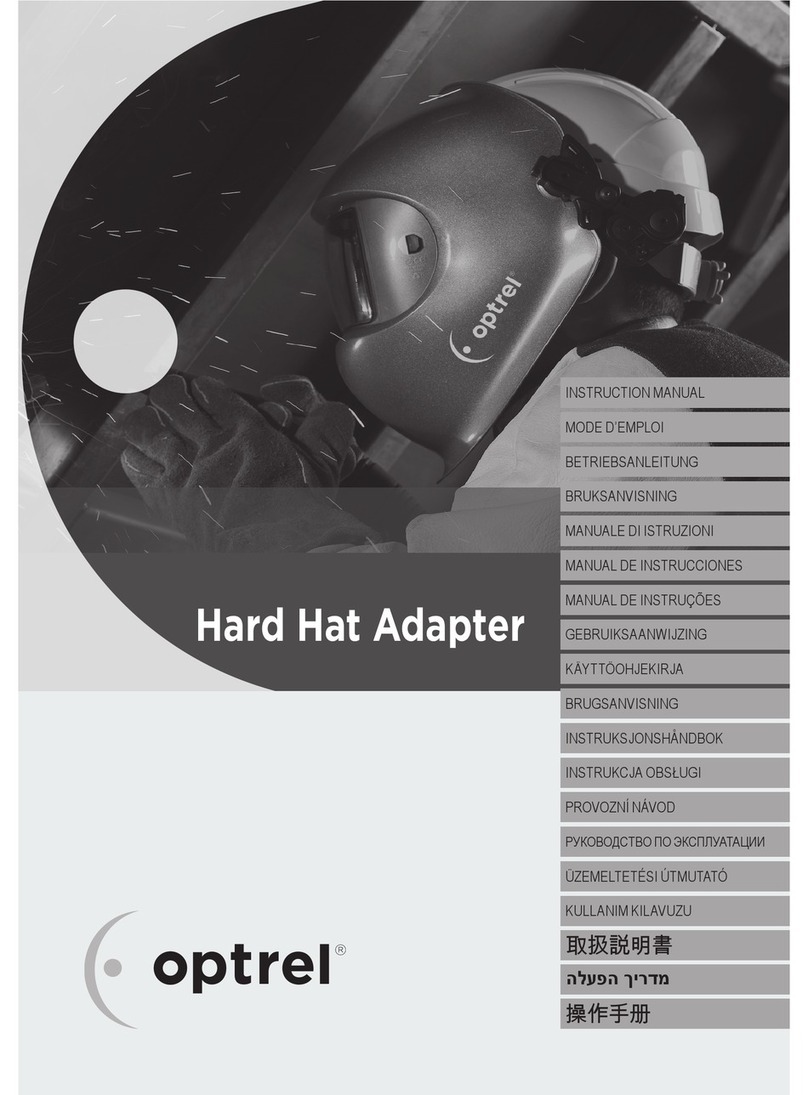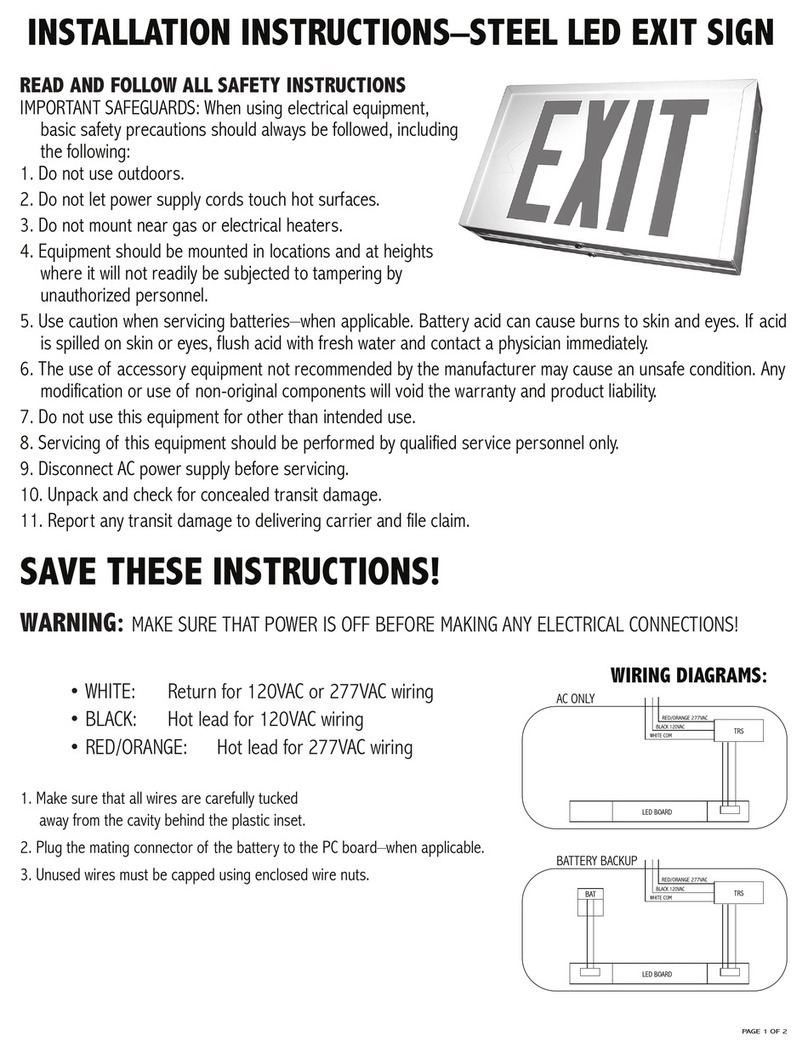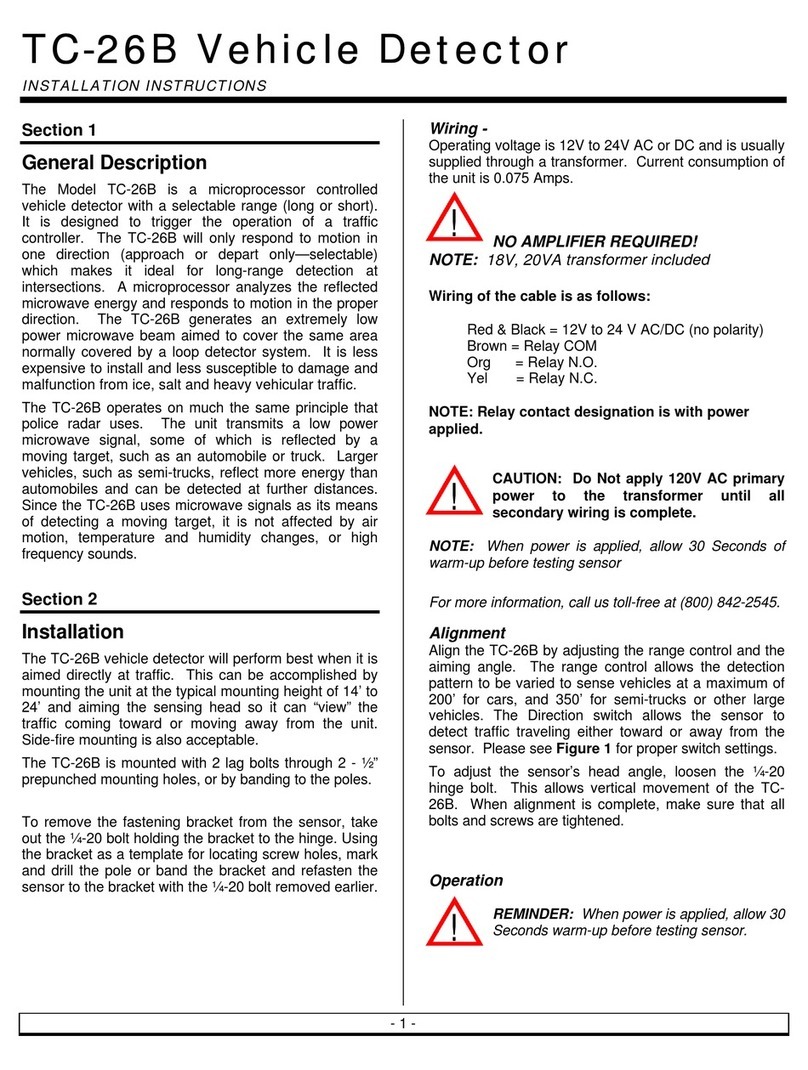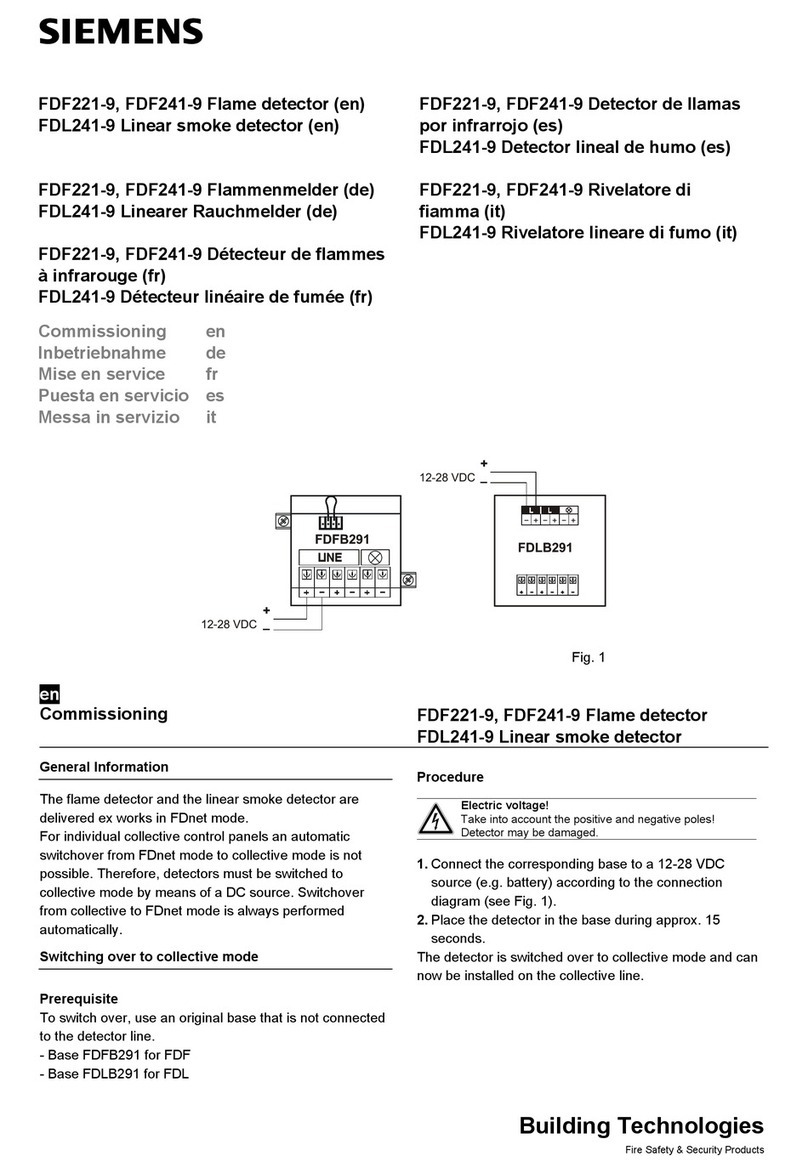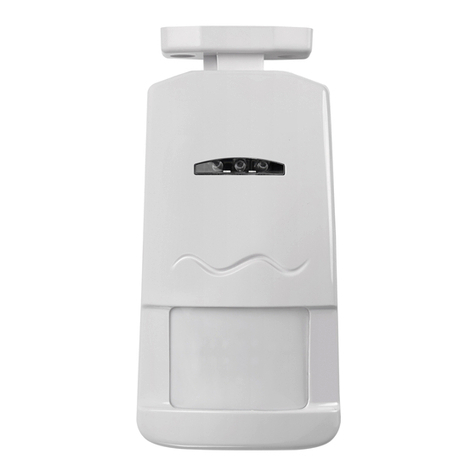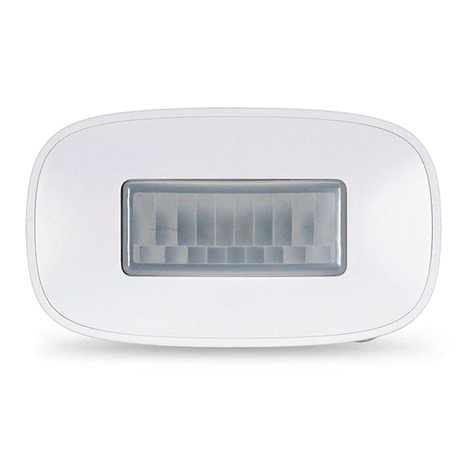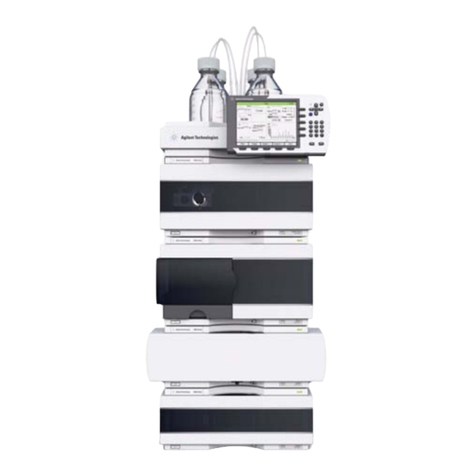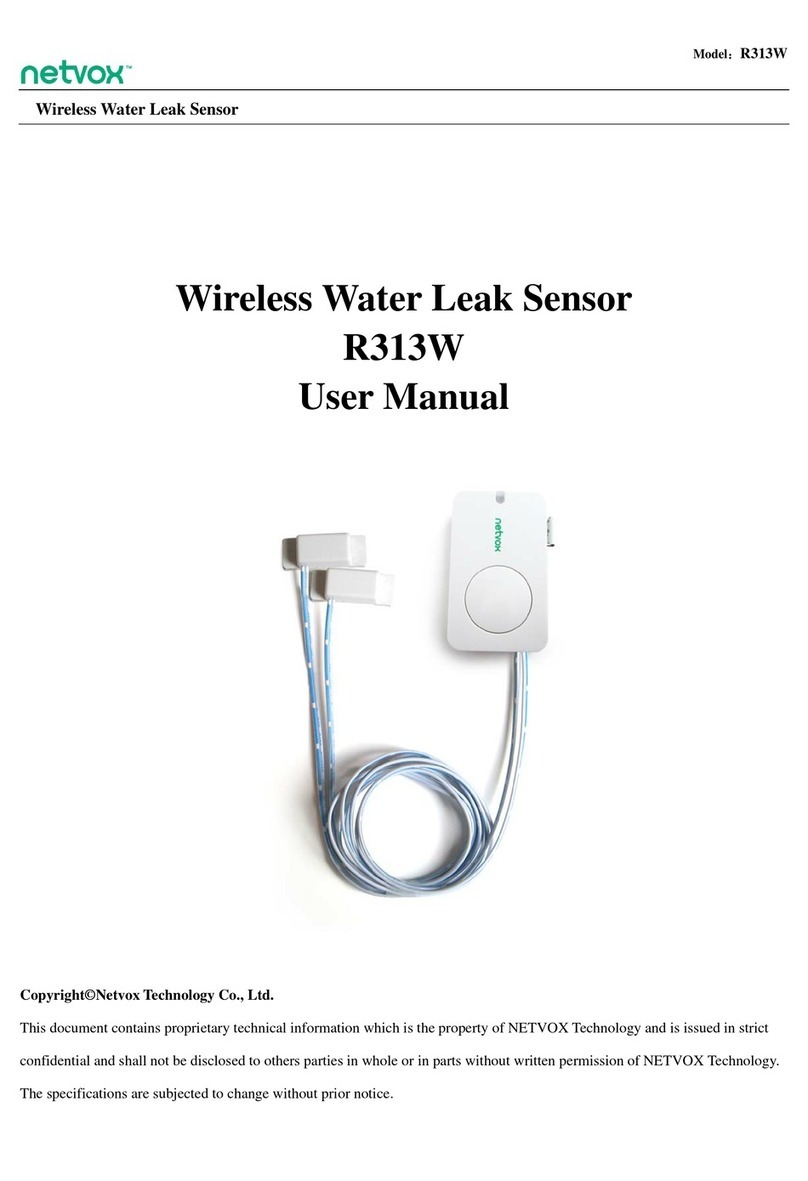
DS600 Non-Ferrous Double Sheet Detector
This document is confidential and proprietary. No part of this document may be disclosed in any manner
to a third party without the prior written consent of Prime Controls, Inc.
202177 15 Revision M
The DS600PC calibration identifier may come from
any of three sources, 1) the SEL parameter entered
through the front panel If ENABLE is not asserted, 2)
through the SEL0, SEL1 and SEL2 terminals if
ENABLE is asserted, or 3) through the network via
the Modbus port if ENABLE is not asserted.
Terminals SEL0 through SEL2 always have priority if
ENABLE is asserted. When ENABLE is not asserted
the selected calibration is the last one entered either
through the front panel or from the network. Thus, if ENABLE is OFF, the latest entry, whether
from the front panel SEL parameter or the network, determines the memory selection.
If the selected calibration memory does not contain valid calibration data, the system reports the
need for calibration by alternately displaying nEEd and CAL until a valid calibration is
completed or another calibration memory is selected
See Logic Inputs (page 6) for electrical implementation of the SEL0, SEL1, SEL2 and ENABLE
signals.
3.7 Setup Considerations
For most applications, sensing an “under” condition is not important. Consequently, the factory
setting for the under tolerance, Ltol (DS600P and DS600PC only) is 100% which disables
under detection. When under detection is activated by setting the Ltol parameter to a value less
than 100, it may be necessary to set the “under delay”, Udly, to a value greater than zero.
The under delay is a “delay-on” time for reporting an under condition. The units of the delay
setting are hundredths of a second (10 milliseconds). The delay-on to under allows material to
be brought into position in front of the probe without reporting an under condition while the part
and probe align. The delay range is .01 seconds to 2 seconds.
3.8 Gauging Response
After calibration, the DS600 responds to the probe signal by appropriately indicating the gauging
state and activating the control outputs. The response is dependent upon the gauging mode, the
position of switches 2 and 3 and the strength of the signal from the probe.
Table 5 shows the response of the DS600 ACCEPT and REJECT LEDs and ACCEPT and
REJECT outputs to various gauge signal levels and switch 2 settings for single/double sensing.
Table 6 shows the response of the DS600P and DS600PC ACCEPT and REJECT LEDs and
ACCEPT, REJECT, and AUX control outputs to various gauge signal levels and switch 2
settings for single/double sensing.
The single/double sensing mode is intended for metal forming applications where it is imperative
that only a single thickness of the sensed material is allowed to pass.
It is worth noting that the REJECT output operates with fail-safe levels. The signal is ON for no
reject and off for reject. Thus, if the controller loses power, a reject is reported by default.
For firmware Version 1.11 and later, the REJECT output is also OFF during initialization after
power-up, whenever nEEd Cal is displayed, and during the calibration process. The ACCEPT
output is OFF during these same intervals.






















